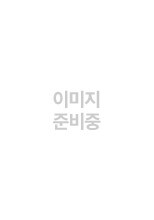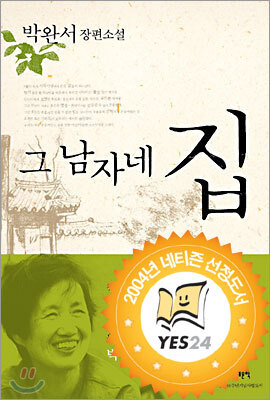Park Wansuh (1931-2011) was a South Korean writer.
Life
Park Wansuh was born in Gaepung-gun in what is now Hwanghaebuk-do in North Korea. Park entered Seoul National University to study Korean literature in 1950, but dropped out almost immediately due to the outbreak of the Korean War and the death of her brother. During the war, Park was separated from her mother and elder brother by the North Korea army, which moved them to North Korea. She lived in the village of Achiul, in Guri, outside Seoul until her death.
Park debuted in 1970 when her novel Namok (나목 The Naked Tree), won the Women's Dong-a Fiction Contest. At the time, she was a full-time housewife with five children. She went on to write fifteen novels and ten short story collections in a career that spanned almost forty years. She won all of Korea's major literary awards, and was posthumously awarded the Republic of Korea's Geumgwan Order of Cultural Merit. Her work has appeared in numerous anthologies in English, with recent standalone translations including Geu manteon singaneun nuga da meogeosseulkka (그 많던 싱아는 누가 다 먹었을까 Who Ate up All the Shinga?), Neomudo sseulsseulhan dangsin (너무도 쓸쓸한 당신 Lonesome You), and Geu sani jeongmal geogi isseosseulkka (그 산이 정말 거기 있었을까 Was that Mountain Really There?).
Writing
In terms of general thematic concern, Park's fiction can be divided into three groups. The first deals with the tragic events of the Korean War and its aftermath. Many of these stories reflect Park's own experiences. The Naked Tree, Geuhae gyeoureun ttatteuthaennae (그해 겨울은 따뜻했네 Warm Was the Winter That Year), and Eommaui malttuk 1 (엄마의 말뚝 1 Mother’s Stake 1) depict families torn apart by the war and the heavy price the war continues to exact from its survivors. The archetypal figure in these works is the suffering mother who must make her way through life after losing both her husband and her son during the war.
Park's works also target the hypocrisy and materialism of middle-class Koreans. The apartments of identical size, furnishings, and decorations that inscribe just as identical lives intent on gaining material gratification in "Dalmeun bangdeul" (닮은 방들 Identical Apartments), a marriage of convenience that brings about disastrous results in Hwicheonggeorineun ohu (휘청거리는 오후 A Reeling Afternoon), and schools where they prune, rather than educate, children in "Naktoui aideul" (낙토의 아이들Children of Paradise), all offer sharp denunciations of a bourgeois society. In these works, acts of individual avarice and snobbery are linked to larger social concerns such as the breakdown of age-old values and dissolution of the family. In turn, these phenomena are found to be symptomatic of the rapid industrialization of society in Korea after the 1960s.
From the 1980s onwards, Park turned increasingly toward problems afflicting women in a patriarchal society while continuing to engage with the lives of middle-class Koreans. Such works include Sarainneun nareui sijak (살아 있는 날의 시작 The Beginning of Days Lived) and Seo inneun yeoja (서 있는 여자 The Woman Standing), with perhaps the most vivid example being "Kkum kkuneun inkyubaeiteo" (꿈꾸는 인큐베이터 The Dreaming Incubator), in which a woman is forced to undergo a series of abortions until she can deliver a male child. Geudae ajikdo kkumkkugo inneunga (그대 아직도 꿈꾸고 있는가Are you Still Dreaming?) features a single mother who raises an unrecognized child, only to have the father try to take him away when he wants a male heir.
Park publie son premier récit en 1970 avec L'arbre nu (Namok) à l'âge de 40 ans. Elle écrit alors à un rythme élevé : en 2007 elle a écrit une quinzaine de romans et dix recueils de nouvelles6. Son travail est « vénéré » en Corée du Sud7. Ses récits se concentrent sur la famille et sur la critique cinglante des classes moyennes8. La couveuse qui rêve (Kkum-kkuneun inkyube-iteo) est un bon exemple de cette caractéristique puisqu'elle met en scène une femme subissant plusieurs avortements avant d'arriver enfin à donner naissance à un garçon. Ses récits les plus connus en Corée sont L'année stérile des villes (Dosi-ui hyung-nyeon), Après-midi chancelante (Hwicheong-georineun ohu), Cet hiver était vraiment doux (Geuhae gyeo-ureun ttatteut-haenne), et Est-il toujours en train de rêver ? (Geudae ajikdo kkumkkugo inneunga)9.
Les thèmes peuvent être divisés en trois groupes. Le premier traite de la guerre de Corée et de ses séquelles ; beaucoup de ces récits reflètent ses propres expériences. Les années durant lesquelles elle doit renoncer à l'université pendant la guerre sont notamment la trame de fond de L'arbre nu (Namok). Des récits comme Cet hiver était vraiment doux mettent en scène également les déchirements familiaux à la suite de la Guerre de Corée, notamment avec l'image de la mère qui perd son époux et son fils à cause de la guerre10.
Dans un deuxième temps, les récits visent le matérialisme et l'hypocrisie des classes moyennes coréennes. Les appartements de même taille, les meubles, les décorations unifiées, Park dépeint le nouveau matérialisme des classes moyennes avec un regard aigu, notamment dans son récit Chambres qui se ressemblent (Dalmeun bangdeul, 1974)10.
Un troisième thème apparaît dans les années 1980, où elle traite des problèmes auxquels sont confrontés les femmes dans une société patriarcale. On retrouve notamment le récit où elle met en scène une femme forcée à avorter avant de mettre au monde un fils, La couveuse qui rêve (Kkum-kkuneun inkyube-iteo)10.
박완서(1931~2011)는 대한민국의 소설가다.
생애
박완서는 1931년 경기도 개풍에서 태어났다. 4살 때 아버지를 여의고 7살 때 온 가족이 서울로 이주했다. 1944년부터 숙명여고를 거쳐 1950년 서울대 국문학과에 입학했으나 한국전쟁 때, 생활이 어려워지면서 학업을 중단했다. 1953년 결혼해서 20년 가까이 전업주부로 지내다가 40세가 되던 1970년 《여성동아》 장편소설 공모전에 《나목》이 당선되어 등단했다. 이후 특별한 공백 기간 없이 꾸준하고 활발하게 작품을 발표하며 한국을 대표하는 소설가 중 한 사람으로 인정받았다.
1988년에 남편과 아들을 연이어 잃은 뒤 큰 충격에 빠져 서울을 떠나 부산의 분도 수녀원에서 지내기도 했다. 1984년에 가톨릭 세례성사를 받은 뒤, 가족을 잃고 잠시 종교적 회의에 빠지기도 했으나 평생 독실한 가톨릭 신자로 지냈다. 가족을 잃은 슬픔 속에서 쓴 단편소설 <나의 가장 나종 지니인 것>(1994)으로 25회 동인문학상을 수상했다. 암 투병하는 남편을 간병하며 소설집 《여덟 개의 모자로 남은 당신》(1995)을 쓰기도 했다. 2006년에는 전쟁 통에 미처 졸업하지 못한 모교 서울대학교 국어국문학과에서 명예 문학박사 학위를 수여받았다. 2011년 지병으로 사망했다.
작품 세계
박완서의 방대한 작품 세계는 주제의 변화에 따라 세 시기로 나누어 볼 수 있다. 첫 번째 시기는 1970년 《나목》으로 등단한 이후 1978년까지다. 한국전쟁 체험의 기록, 분단 현실의 반영, 중산층의 허위의식 비판 등 박완서 소설의 주요 주제들이 이 시기에 이미 확립되었다. 가장 널리 알려진 이 시기의 대표작은 물질 만능주의와 왜곡된 결혼 풍속을 비판적으로 그려낸 장편소설 《휘청거리는 오후》(1976)다.
두 번째 시기는 1979년부터 1989년까지 약 10년간이다. 첫 번째 시기의 주제가 지속되는 한편, 여성주의와 노년에 대한 관심이 새롭게 나타나기 시작한다. 이 시기의 대표작은 견고한 남성 중심 사회에서 억압받는 여성들을 다룬 장편소설 《살아있는 날의 시작》(1980), 《서 있는 여자》(1983), 《그대 아직도 꿈꾸고 있는가》(1989) 등이다.
세 번째 시기는 1990년부터 작가가 세상을 떠난 2011년까지다. 이 시기에 박완서의 필력은 더욱 빛을 발하여 수많은 대표작들을 쏟아냈다. 가족사를 통해 근대사를 재조명한 장편소설 《미망》(1990)을 비롯해, 노년기의 심경과 가족을 잃은 고통을 담은 소설집 《너무도 쓸쓸한 당신》(1998), 한국전쟁 전후의 자전적 체험을 집대성한 장편소설 《그 많던 싱아는 누가 다 먹었을까》(1992), 《그 산이 정말 거기 있었을까》(1995) 등을 이 시기의 대표작으로 꼽을 수 있다. 《기나긴 하루》(2012)는 사후에 출간된 박완서의 마지막 소설집이다.
주요 작품
1) 전집
《박완서 소설전집 결정판》(전 22권), 세계사, 2012.
《박완서 단편소설 전집》(전 7권), 문학동네, 2013.
2) 소설집
《부끄러움을 가르칩니다》, 일지사, 1976.
《창밖은 봄》, 열화당, 1977(1979년 《꿈을 찍는 사진사》로 제목을 바꿔 재출간)
《배반의 여름》, 창작과비평사, 1978.
《나목·도둑맞은 가난》, 민음사, 1981.
《이민 가는 맷돌》, 심설당, 1981.
《오만과 몽상》, 한국문학사, 1981.
《엄마의 말뚝》, 일월서각, 1982.
《서울 사람들》, 글수레, 1984.
《그 가을의 사흘 동안》(선집), 나남, 1985.
《꽃을 찾아서》, 창작과비평사, 1986.
《그 살벌했던 날의 할미꽃》(단편선집), 심지, 1987.
《저문 날의 삽화》, 문학과지성사, 1991.
《박완서 문학상 수상작품집》, 훈민정음, 1993.
《한 말씀만 하소서》, 솔, 1994.
《울음 소리》(단편선집), 솔, 1996.
《너무도 쓸쓸한 당신》, 창비. 1998.
《친절한 복희씨》, 문학과지성사, 2007.
《기나긴 하루》, 문학동네, 2012.
3) 장편소설
《나목》, 동아일보사, 1970.
《휘청거리는 오후 1-2》, 창작과비평사, 1976.
《도시의 흉년》, 문학사상사, 1979.
《욕망의 응달》, 수문서관, 1979.(1984년 《인간의 꽃》로 제목을 바꿔 재출간)
《목마른 계절》, 수문서관, 1978.
《살아있는 날의 시작》, 세계사, 1980.
《그해 겨울은 따뜻했네》, 민음사, 1983.
《서 있는 여자》, 학원사, 1985.
《미망 1-3》, 문학사상사, 1990.
《그 산이 정말 거기 있었을까》,1995
《그대 아직도 꿈꾸고 있는가》, 삼진기획, 1989.
《그 많던 싱아는 누가 다 먹었을까》, 웅진출판, 1992.
《그 산이 정말 거기 있었을까》, 웅진출판, 1995.
《아주 오래된 농담》, 실천문학사, 2000.
《그 남자네 집》, 현대문학사, 2004.
4) 산문집
《꼴찌에게 보내는 갈채》, 평민사, 1977.
《혼자 부르는 합창》, 진문출판사, 1977.
《여자와 남자가 있는 풍경》, 한길사, 1978.
《살아있는 날의 소망》, 학원사, 1982.
《지금은 행복한 시간인가》(자선 에세이집), 자유문학사, 1985.
《서 있는 여자의 갈등》, 나남, 1986.
《나는 왜 작은 일에만 분개하는가》, 햇빛출판사, 1990.
《한 길 사람 속》, 작가정신, 1995.
《우리를 두렵게 하는 것들》, 자유문화사, 1996.
《모독(티베트, 네팔 여행기)》, 학고재, 1997.
《어른 노릇 사람 노릇》, 작가정신, 1998.
《님이여 그 숲을 떠나지 마오》(묵상집), 여백, 1999.
《작은 마음이 아름다운 세상을 만든다》(에세이 선집), 미래, 1999.
《아름다운 것은 무엇을 남길까》(등단 30주년 기념 산문 선집), 세계, 2000.
《두부》, 창작과비평사, 2002.
《나목에 핀 꽃》(그림, 소설을 읽다 1권), 랜덤하우스중앙, 2004.
《잃어버린 여행가방》, 실천문학사, 2005.
《옳고도 아름다운 당신》(묵상집), 시냇가에심은나무, 2006.
《호미》, 열림원, 2006.
《못 가본 길이 더 아름답다》, 현대문학, 2010.
5) 콩트집
《나의 아름다운 이웃》(콩트집), 작가정신, 1991.
수상 내역
1980 제7회 한국문학작가상
1981 제5회 이상문학상
1990 대한민국문학상
1993 제38회 현대문학상
1994 제25회 동인문학상
1995 제1회 한무숙문학상
1997 제5회 대산문학상
1998 보관문화훈장
1999 제14회 만해문학상
2001 제1회 황순원문학상
2006 제16회 호암상 예술상
2011 금관문화훈장




